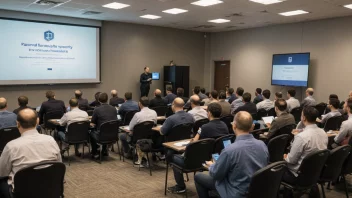As quantum computing progresses from theoretical research to practical applications, it is crucial to understand how network protocols will evolve to accommodate this emerging technology. Quantum computing offers unprecedented computational power, but it also brings unique challenges and opportunities for network design. In this article, we will explore the implications of quantum computing on network protocols, focusing on their potential applications and the necessary adaptations required for future networks.
One of the most significant impacts of quantum computing on network protocols is the need for enhanced security measures. Traditional encryption methods, such as RSA and ECC, rely on the difficulty of certain mathematical problems for their security. However, quantum computers can solve these problems much faster than classical computers, rendering current encryption techniques vulnerable. As a result, researchers are actively working on quantum-resistant algorithms that can withstand attacks from quantum capabilities. Developing these new algorithms will be essential for maintaining data integrity and confidentiality in future networks.
In addition to security challenges, quantum computing also opens up new avenues for data transmission. Quantum key distribution (QKD) is one such application that leverages the principles of quantum mechanics to ensure secure communication. By utilizing quantum states to share encryption keys, QKD allows for the detection of eavesdropping attempts, as any interception would alter the quantum state and alert the communicating parties. Incorporating QKD into network protocols could revolutionize how secure information is exchanged across networks.
Furthermore, the concept of quantum entanglement presents exciting possibilities for network architecture. Entangled particles can instantaneously affect each other's states, regardless of the distance separating them. This phenomenon could facilitate the development of new network topologies that are faster and more efficient than current systems. Protocols that exploit entanglement could allow for real-time data sharing and communication that far exceeds the capabilities of classical networks.
However, integrating quantum computing into existing network protocols poses significant challenges. Legacy systems must be updated to support quantum technologies, which may require substantial investment and technological innovation. Moreover, the transition to quantum-compatible protocols will necessitate collaboration among researchers, engineers, and policymakers to establish standards and best practices for implementation.
In conclusion, the future of network protocols in quantum computing presents both challenges and opportunities. As quantum technology evolves, so too must our approaches to network security and design. By embracing innovations such as quantum-resistant algorithms, quantum key distribution, and entangled networking, we can harness the power of quantum computing while ensuring robust and secure communication channels. The journey ahead will require collaboration and foresight but holds the promise of a transformative era in network protocols.






